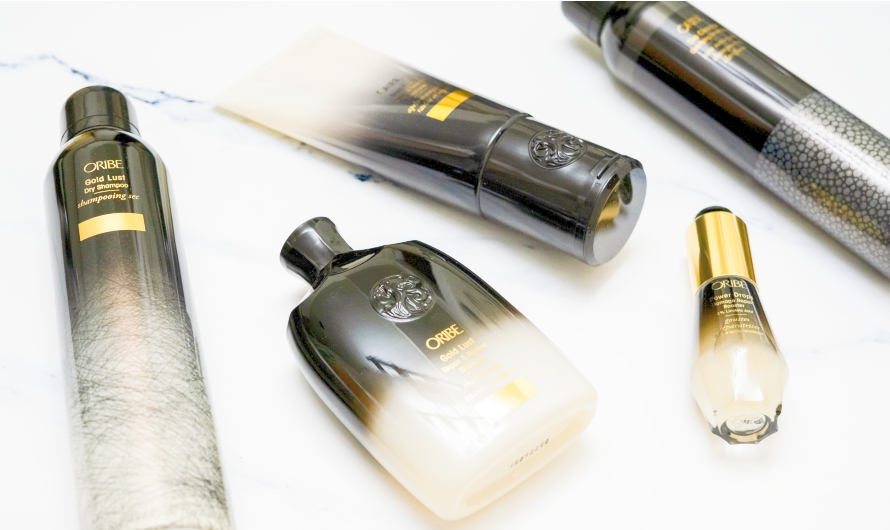Choosing the right shampoo and conditioner for your specific hair type and needs is crucial for keeping your locks healthy, shiny, and manageable. With so many products on the market catering to different hair types and concerns, it can be overwhelming finding your perfect match. Follow this guide to determine your hair characteristics, understand ingredients, and learn tips for choosing products tailored just for you.
Determining Your Hair Type
The first step is identifying your hair type. The main categories are:
Normal hair – This hair type has no excessive oiliness or dryness. The texture is smooth, with a medium diameter. Normal hair tends to be quite easy to style and care for.
Dry hair – Dry hair lacks moisture, often feeling coarse and straw-like. It is prone to frizz, tangles, and static. Brittle ends that split easily are also common with very dry hair.
Oily hair – This type produces excess sebum from the scalp, leaving hair greasy and limp. Oily hair tends to look and feel flat against the head due to the weight of the oil.
Combination hair – Those with combination hair experience dryness on the ends but greasy roots. The best approach is using products that hydrate dry mid-lengths and ends without adding moisture to already oily roots.
Curly/kinky hair – Tight curls and coils tend to be quite dry as oils have difficulty distributing down the twisted strands from the scalp. Using heavy moisturizing products is a must.
Damaged/color-treated hair – Chemical processing and heat styling causes damage, leaving hair weakened and porous. Deep conditioning and bond repairing products are ideal for fixing and preventing damage.
Ingredients to Look For in Shampoos and Conditioners
Reading the ingredient list reveals what hair needs the product aims to address. Key ingredients include:
Surfactants (Cleansing Agents) – These ingredients are found in shampoos and provide the cleaning and lathering effect. Look for gentle options like decyl glucoside for easily-irritated scalps.
Conditioning Agents – Conditioners use ingredients like silicones, cetyl alcohol, and fatty alcohols to smooth the hair cuticle and increase softness. These combat tangles and frizz.
Additional Beneficial Ingredients – Keratin, glycerin, silk proteins, shea butter, argan oil, and panthenol strengthen, nourish, and repair hair. Antioxidants fight damage from the environment.
Ingredients to Avoid – Sulfates, parabens, phthalates, and mineral oil can irritate the scalp and strip hair of moisture. Avoid these in ingredient lists.
Shampoo and Conditioner Formulations for Different Hair Types
Look for key features suited to your hair’s needs:
Normal Hair – Opt for a gentle daily shampoo and lightweight conditioner that won’t weigh hair down or dry it out.
Dry Hair – Seek ultra-hydrating shampoos and masks containing oils and butters. Avoid sulfates and alcohol that can cause further dryness.
Oily Hair – Use clarifying, sulfate-free shampoos to remove oil without stripping hair completely. Avoid thick conditioners that add weight.
Combination Hair – Use a clarifying shampoo only on the scalp and a rich conditioner just on the ends to target both concerns.
Curly/Kinky Hair – Cleansing creams and coconut oil-based shampoos add moisture without buildup. Use thick leave-in conditioners and styling creams.
Damaged/Color-Treated Hair – Opt for bond-repairing shampoos and hydrating masks weekly. Avoid sulfates, alcohol, and heat styling.
How Often to Shampoo and Condition Various Hair Types
Hair’s oiliness and texture impacts ideal wash frequency:
Normal Hair – Can be washed daily or every other day as needed.
Oily Hair – Should be shampooed daily to control oil but limit conditioning to avoid buildup.
Dry Hair – Wash just 1-2 times per week. Excess washing increases dryness. Rely more on conditioner.
Damaged/Color-Treated Hair – Limit washes to 1-2 times weekly. Use conditioning treatments in place of some shampooing.
Tips for Maximizing Shampoo and Conditioner Results
Get the most out of your hair products with these tips:
Follow Instructions – Shampoo first, then conditioner. Let each sit for the recommended time before rinsing thoroughly.
Rotate Shampoo and Conditioner – Switching up products regularly prevents buildup in hair.
Apply and Rinse Thoroughly – Apply shampoo only to the scalp and scrub gently. Conditioner goes just mid-length to ends. Rinse out completely.
Use Optimal Water Temperature – Very hot water damages hair. Warm but not scalding temperature is best. Rinse with cool water.
Consider Diet and Overall Health – Stay hydrated, get nutrients, and take supplements that support hair growth for optimal results from products.
Protect Hair Between Washes – Use gentle styling, silk pillowcases, UV protection, and hats to minimize damage and keep hair cleaner longer.
Signs It’s Time to Switch Up Your Shampoo and Conditioner
Watch for these cues your current products may not be working:
Increased Oiliness or Dryness – Products that are too harsh or moisturizing can cause scalp and hair changes.
Lackluster Locks – So-so shine and vibrancy indicate your shampoo and conditioner needs an upgrade.
Buildup on Scalp – Physical residue on the scalp reveals the need for a clarifying shampoo to remove product buildup.
Hair Falls Flat Quickly – Limp, lifeless hair that loses volume fast means your shampoo is weighing hair down.
Dandruff or Irritation – Flaking, itching scalp points to switching products, especially if it clears up between washes.
DIY Shampoo and Conditioner Recipes
For a natural approach, try these recipes at home:
Baking Soda and Apple Cider Vinegar Shampoo – Mix 1 tbsp baking soda with 1 cup water and apply. Rinse with 1/2 cup apple cider vinegar diluted in 1 cup water.
Coconut Milk and Honey Conditioner – Whisk 1 cup coconut milk with 1 tbsp honey. Apply to mid-lengths and ends, leaving on for 5-10 minutes before rinsing.
Avocado and Olive Oil Hair Mask – Mash 1 ripe avocado with 2 tbsp olive oil. Apply all over damp hair and let sit 30 minutes before rinsing out. Use weekly.
Best Drugstore Shampoo and Conditioner Brands
Top affordable, easily accessible options include:
Shampoos – Neutrogena, Kristin Ess, OGX, SheaMoisture, Dove, Suave
Conditioners – Aussie, TreSemme, Garnier, Herbal Essences, Pantene, Maui Moisture
Best High-End Salon Shampoo and Conditioner Lines
For premium results, invest in these luxury brands:
Top Brands – Bumble and Bumble, Kerastase, Olaplex, Alterna, Living Proof, Moroccanoil, Aveda
Celeb Stylist Favorites – Hairstylists for celebrities often rely on expensive but highly effective brands like Oribe, Leonor Greyl, Rahua, and Amika.
Conclusion
Choosing a targeted shampoo and conditioner tailored to your specific hair needs and type delivers the best possible results for optimized hair health, beauty, and manageability. Pay close attention to your hair’s characteristics and any problems you want to address. Research ingredients and read reviews to find beloved products that provide effects like moisturizing, volumizing, smoothing, color-protection, and more based on your goals. With the right shampoo and conditioner combination for your unique hair, you will notice a dramatic difference in hair happiness.
FAQ
How do I know if I have dandruff or just a dry scalp?
Dandruff causes visible flaking and shedding. Dry scalp leads to irritation and tightness but no flaking. Rub scalp after washing – if you see flakes it’s likely dandruff.
How often should I change my shampoo and conditioner?
Aim to change your shampoo every 3-6 months and conditioner every 6-9 months. Switching regularly keeps hair happy and prevents product fatigue.
Do leave-in conditioners really make a difference?
Yes, leave-in conditioners provide continuous hydration and nutrients for hair throughout the day, helping keep locks soft, sleek, and frizz-free between washes.
Is it better to get shampoo and conditioner as a set?
Buying sets can simplify your routine but may not target specific needs. Get a targeted shampoo for your scalp and matching conditioner for just your hair ends for best customization.
Will purple shampoo help my highlights?
Yes, purple shampoo helps cancel out brassy tones and keep blonde and gray highlights looking bright. Use just 1-2 times weekly to avoid overdoing it.




